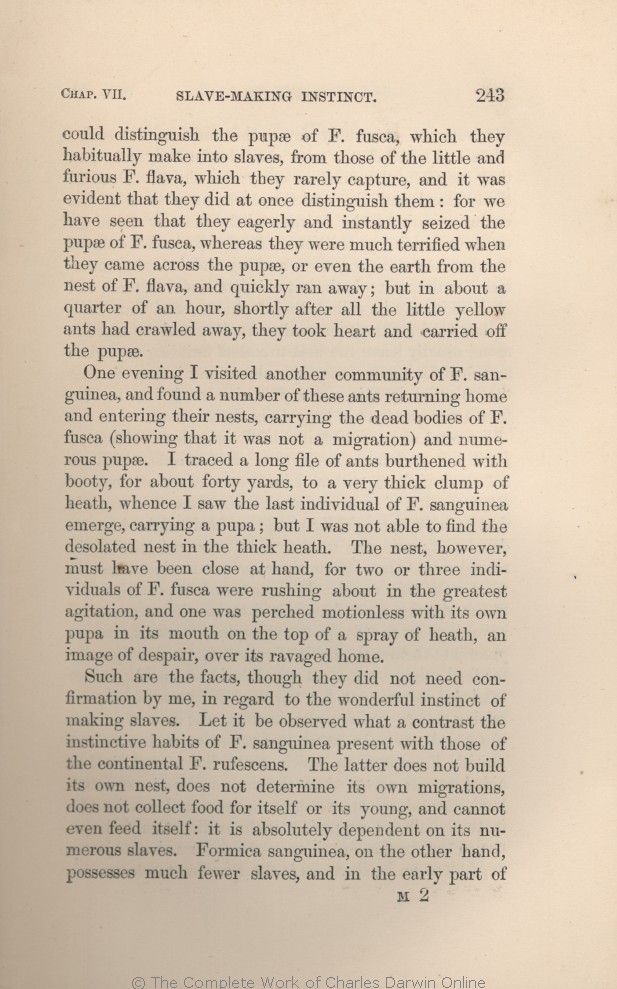could distinguish the pupæ of F. fusca, which they habitually make into slaves, from those of the little and furious F. flava, which they rarely capture, and it was evident that they did at once distinguish
them: | them: 1859 1860 1861 1866 | | them; 1869 1872 |
| nest 1859 1860 1861 | | nest, 1866 1869 1872 |
|
|
One evening I visited another community of F. sanguinea, and found a number of these ants
returning home and entering | returning home and entering 1860 1861 1866 1869 1872 |
| entering 1859 |
| nests, 1860 1861 1866 1869 1872 | | nest, 1859 |
| a long file of ants 1860 1861 1869 1872 |
| the returning file 1859 |
| a long life of ants 1866 |
| yards, 1859 1860 1861 1866 | | yards 1869 1872 |
| to 1859 1860 1861 1866 | | back, to 1869 1872 |
| heath, 1860 1861 1866 1869 1872 | | heath 1859 |
| an image of despair, over 1860 1861 1866 1869 |
| over 1859 |
| an image of despair over 1872 |
|
|
Such are the facts, though they did not need confirmation by me, in regard to the wonderful instinct of making slaves. Let it be observed what a contrast the instinctive habits of F. sanguinea present with those of the
continental F. | continental F. 1860 1861 1866 1869 1872 | | F. 1859 |
|









